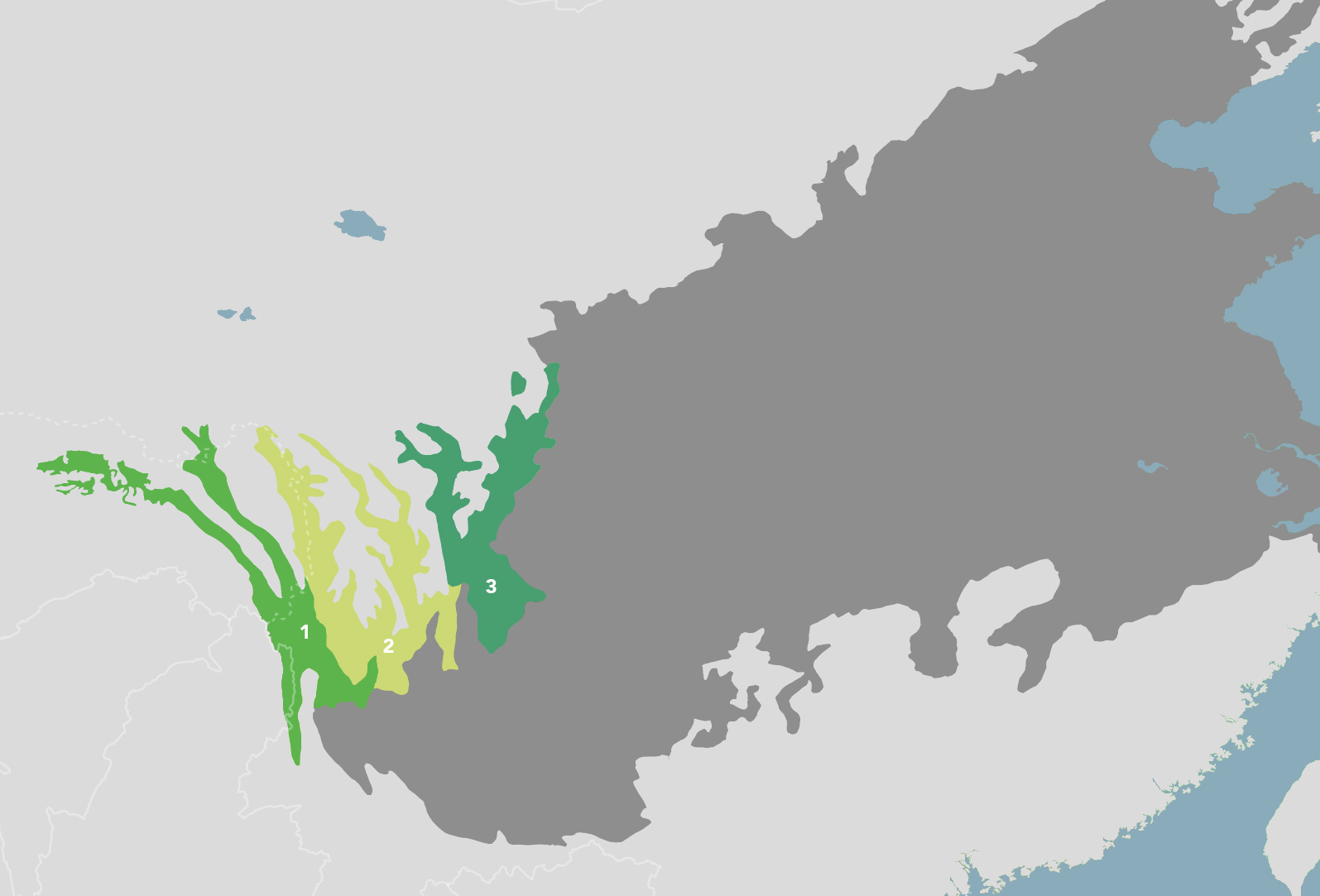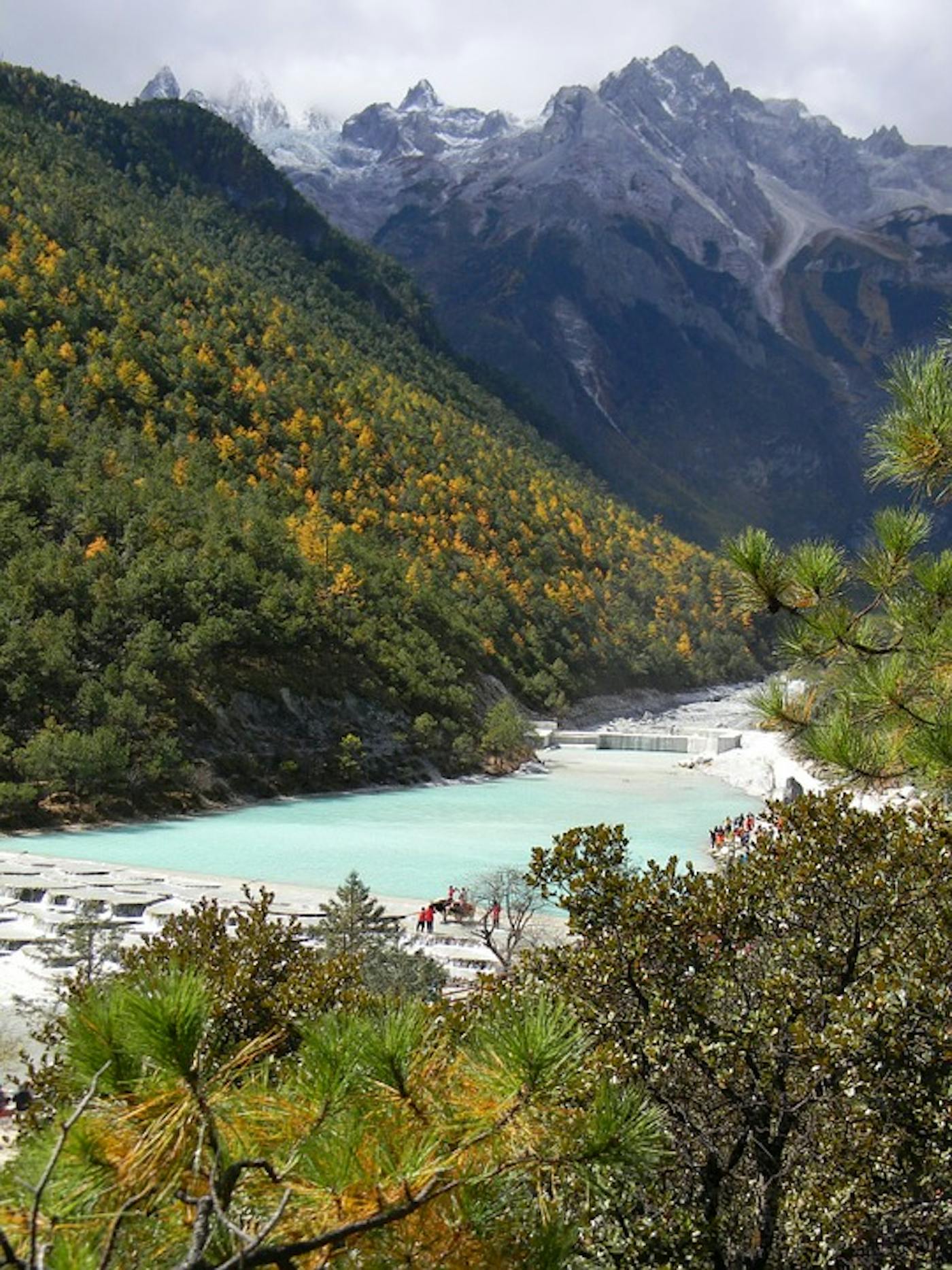Hengduan Mountain Conifer Forests bioregion
The bioregion’s land area is provided in units of 1,000 hectares. The conservation target is the combined Global Safety Net (GSN1) areas for the component ecoregions. The protection level indicates the percentage of the GSN goal that is currently protected on a scale of 0-10. N/A means data is not available at this time.
The Hengduan Mountain Conifer Forests bioregion includes a group of parallel mountain ranges that connect the southeast portion of the Tibetan Plateau with the Yunnan-Guizhou Plateau in southwest China. These forested mountains are defined by three rivers—the Yangtze, Mekong, and Salween—and are recognized today as the Three Parallel Rivers UNESCO World Heritage Site, one of the most biologically diverse temperate region on Earth, home to 6,000 plant species, 173 mammal species, and 417 bird species, many of which are endemic to the region. This bioregion contains three ecoregions—Hengduan Mountains Subalpine Conifer Forests (697), Nujiang Lancang Gorge Subalpine Conifer and Mixed Forests (704), Qionglai-Minshan Conifer Forests (706)—totaling over 26 million hectares of land area.

The Hengduan Mountain Conifer Forests bioregion is part of the Central East Asian Forests subrealm and is made up of three ecoregions: (1) Nujiang Lancang Gorge Subalpine Conifer and Mixed Forests (2) Hengduan Mountains Subalpine Conifer Forests (3) Qionglai-Minshan Conifer Forests.
Learn more about each of the Hengduan Mountain Conifer Forests ecoregions below.
Explore the Bioregions
Want to learn more about the fascinating species, diverse ecosystems, and natural wonders of the Earth? Click the button below to launch One Earth's interactive navigator and discover your Bioregion!
LAUNCH NAVIGATOR


